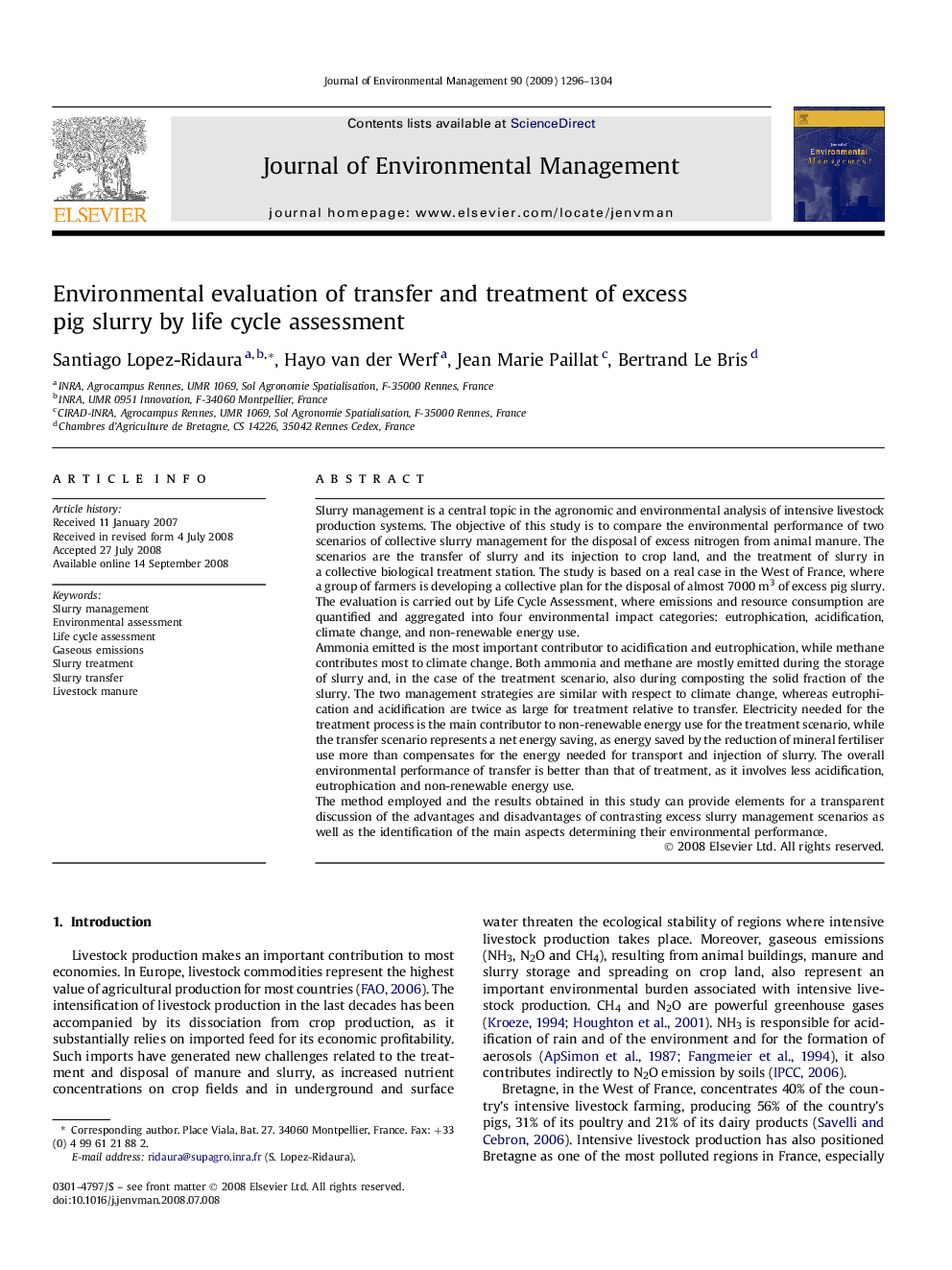| کد مقاله | کد نشریه | سال انتشار | مقاله انگلیسی | نسخه تمام متن |
|---|---|---|---|---|
| 1058474 | 947118 | 2009 | 9 صفحه PDF | دانلود رایگان |

Slurry management is a central topic in the agronomic and environmental analysis of intensive livestock production systems. The objective of this study is to compare the environmental performance of two scenarios of collective slurry management for the disposal of excess nitrogen from animal manure. The scenarios are the transfer of slurry and its injection to crop land, and the treatment of slurry in a collective biological treatment station. The study is based on a real case in the West of France, where a group of farmers is developing a collective plan for the disposal of almost 7000 m3 of excess pig slurry. The evaluation is carried out by Life Cycle Assessment, where emissions and resource consumption are quantified and aggregated into four environmental impact categories: eutrophication, acidification, climate change, and non-renewable energy use.Ammonia emitted is the most important contributor to acidification and eutrophication, while methane contributes most to climate change. Both ammonia and methane are mostly emitted during the storage of slurry and, in the case of the treatment scenario, also during composting the solid fraction of the slurry. The two management strategies are similar with respect to climate change, whereas eutrophication and acidification are twice as large for treatment relative to transfer. Electricity needed for the treatment process is the main contributor to non-renewable energy use for the treatment scenario, while the transfer scenario represents a net energy saving, as energy saved by the reduction of mineral fertiliser use more than compensates for the energy needed for transport and injection of slurry. The overall environmental performance of transfer is better than that of treatment, as it involves less acidification, eutrophication and non-renewable energy use.The method employed and the results obtained in this study can provide elements for a transparent discussion of the advantages and disadvantages of contrasting excess slurry management scenarios as well as the identification of the main aspects determining their environmental performance.
Journal: Journal of Environmental Management - Volume 90, Issue 2, February 2009, Pages 1296–1304